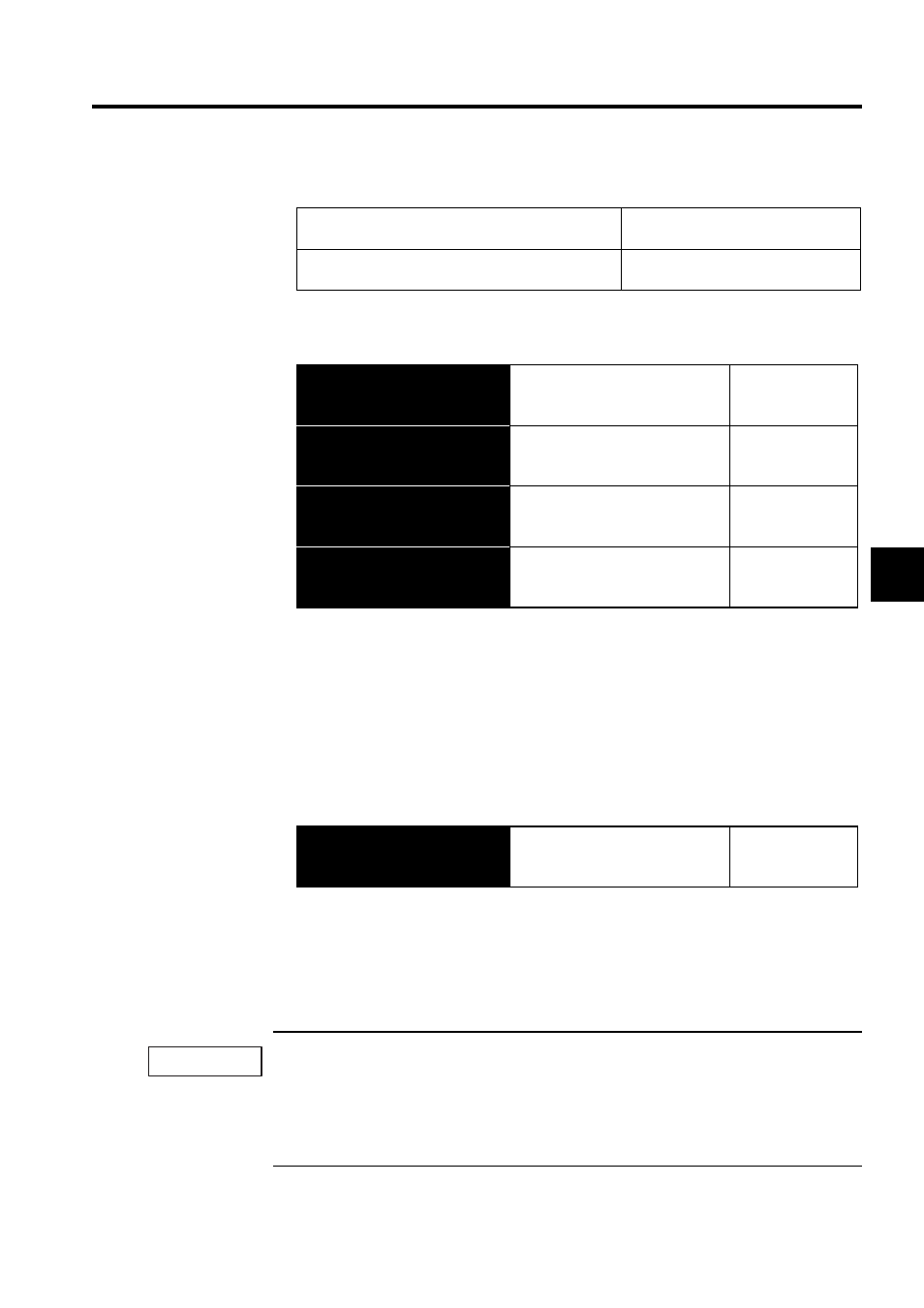Yaskawa Large Capacity Sigma II Series User Manual
Page 147

4.5 Forming a Protective Sequence
4-71
4
Form an external circuit so this alarm output (ALM) turns the SERVOPACK OFF.
Alarm codes ALO1, ALO2 and ALO3 are output to indicate each alarm type. The uses of
open-collector output signals ALO1, ALO2 and ALO3 is described below.
These signals output alarm codes to indicate the type of alarm detected by the SERVO-
PACK.
Use these signals to display alarm codes at the host controller.
See 8.2.3 Alarm Display Table for more details on the relationship between alarm display
and alarm code output.
When a Servo alarm (ALM) occurs, eliminate the cause of the alarm and set the following
/ALM-RST input signal to high level (ON) to reset the alarm.
The alarm reset signal is used to reset a Servo alarm.
Form an external circuit so the SERVOPACK turns OFF when an alarm occurs. Alarms are
reset automatically when the control power supply is turned OFF.
Alarms can also be reset using a Panel or Digital Operator.
1. Encoder alarms cannot always be reset by inputting the /ALM-RST signal. In that case, turn the
control power supply OFF to reset the alarm.
2. When an alarm occurs, always eliminate the cause before resetting the alarm. See 8.2.1 Trouble-
shooting Problems with Alarm Displays for more details on troubleshooting the system when an
alarm occurs.
ON:
Circuit between CN1-31 and 32 is
closed, and CN1-31 is at low level.
Normal state
OFF:
Circuit between CN1-31 and 32 is open,
and CN1-31 is at high level.
Alarm status
Output
→ ALO1 CN1-37
Alarm Code Outputs
Speed/Torque
Control,
Position Control
Output
→ ALO2 CN1-38
Alarm Code Output
Speed/Torque
Control,
Position Control
Output
→ ALO3 CN1-39
Alarm Code Output
Speed/Torque
Control,
Position Control
Output
→ SG CN1-1
Signal Ground for Alarm Code
Output
Speed/Torque
Control,
Position Control
→ Input /ALM-RST CN1-44
Alarm Reset
Speed/Torque
Control,
Position Control
IMPORTANT
